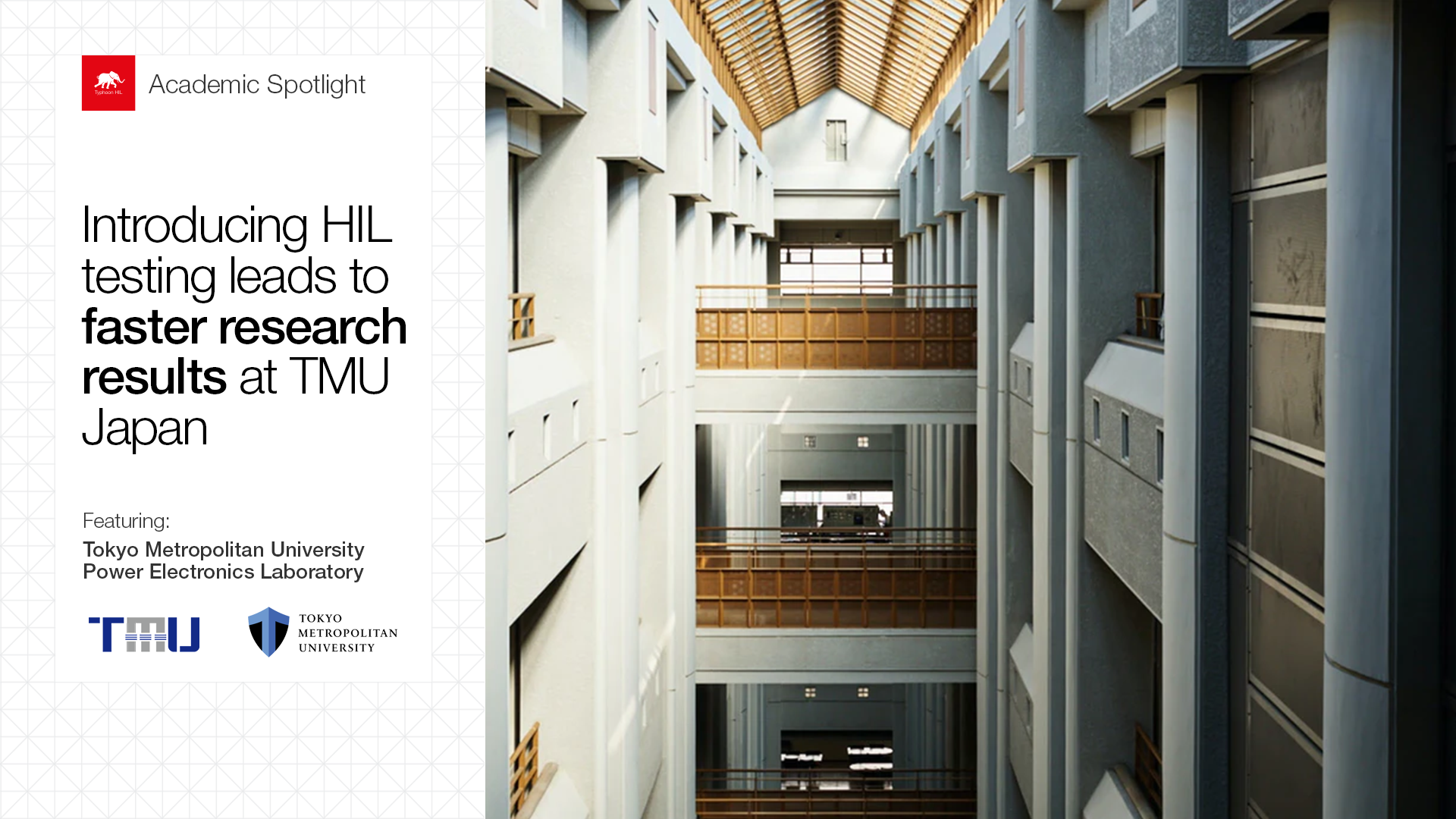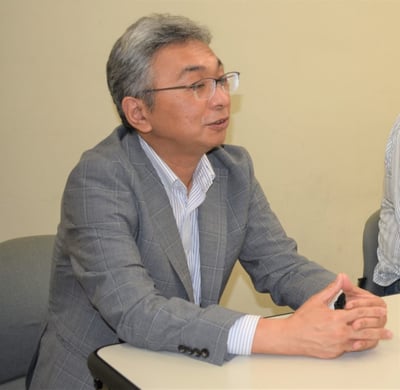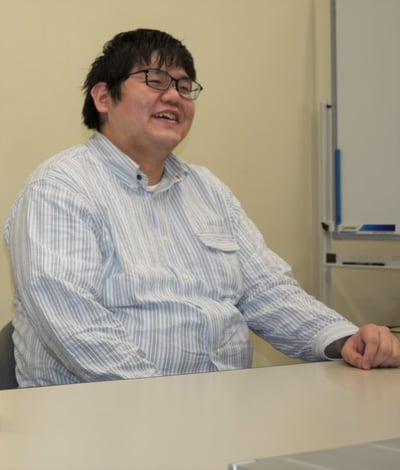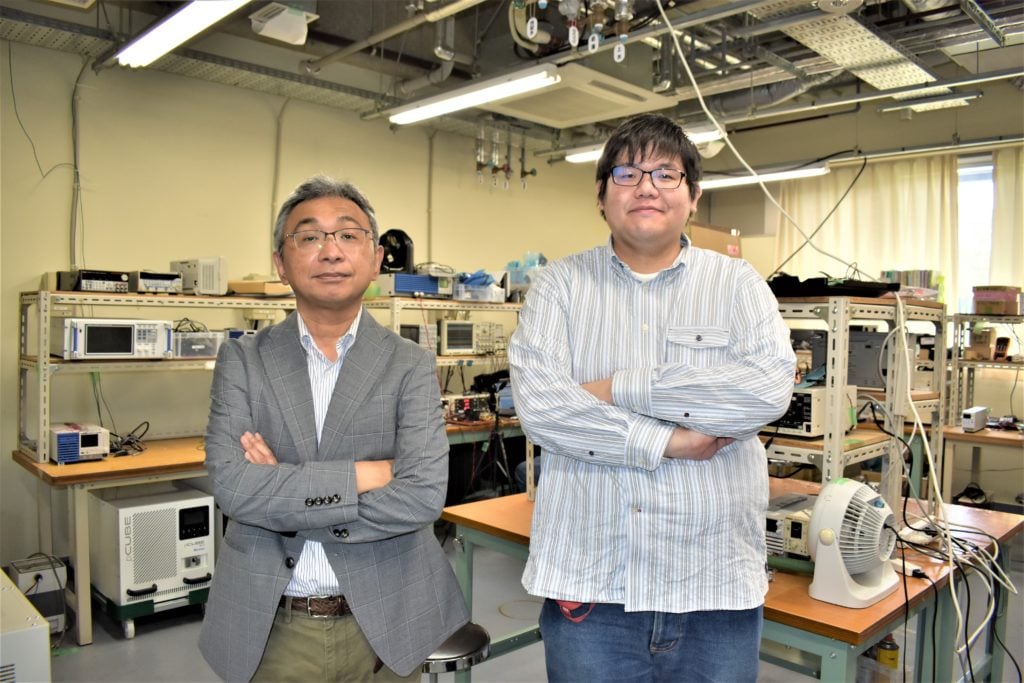
The Tokyo Metropolitan University Power Electronics Laboratory conducts research on improving the performance of passive devices for power electronics and power conversion circuits. Isamu Sugiyama from MyWay had the honor to interview Prof. Dr. Keiji Wada and his PhD student, Takaya Sekiguchi, on how they use Typhoon HIL in their research. Read this blog article to learn more on how introducing HIL into their research enabled achieving faster research results in their lab.
Please tell us about your research in the Power Electronics Laboratory of Tokyo Metropolitan University.
Prof. Wada | We cover a wide range of applications of power electronics circuits, circuits, and elemental technologies. Rather than focusing on specific fields, we try to cover as wide a range of fundamental technologies as possible and consider how those technologies can be applied. We do joint research with companies, but we also perform original research in our laboratory on a daily basis.
Do you also conduct joint research with other universities?
Prof. Wada | Yes, of course, we do joint research with other universities. However, when we conduct joint research with other laboratories, we try to work with professors who specialize in different fields, so that we can share the responsibility for the research.
What specialty fields are professors that you collaborate from?
Prof. Wada | We collaborate with a wide range of people, including professors who specialize in motors, integrated circuits, and power devices, as well as professors who are completely unrelated to electricity, such as those who study numerical calculations and biology.
What are the currently trending research topics in your lab?
Prof. Wada | I feel that there are many ongoing research topics with SiC (silicon carbide) and GaN (galium nitride) converters. I think it is important to think about what should be done to bring out the best performance, rather than simply building a circuit according to a schematic. Recently, I have been thinking about interdisciplinary fusion, and I would like to work with people in fields other than my specialty, such as power devices and passive components, to open new research topics in the future.
Mr. Sekiguchi | My specialty is photovoltaics (PV) research, so I'm checking on trends related to power systems. Much of the recent attention is focused on the instability of the entire grid when a large number of distributed power sources (DERs) are introduced to it. Since the mass introduction of distributed power supplies is associated with a lack of inertia in the grid, I feel that there is a lot of research on grid-forming inverters for distributed power supplies that create inertia.
“There is a lot of research on grid-forming inverters for distributed power supplies.
 A photograph of Prof. Wada, taken during the interview.
A photograph of Prof. Wada, taken during the interview.
Please tell us more about your research, Mr. Sekiguchi.
Mr. Sekiguchi | My specialty is PV research, and my focus is on improving the efficiency and longevity of PV inverters. One of the issues that can arise in PV systems is the problem of partial shadows on PV arrays that affect power generation efficiency. My research goal is to achieve high PV efficiency and long system life by integrating an active power decoupling and control method that extends the life of electrolytic capacitors.
When did you first learn about Hardware-in-the-Loop (HIL)?
Prof. Wada | It was about 10 years ago, when I visited a research lab at an overseas university. There, I saw HIL being used extensively and learned that it could also be applied in the field of power electronics. Even back then, I felt that the jump of going from circuit simulation (via software-in-the-Loop, or SIL) to the physical device was a high hurdle, but honestly, I didn't have the opportunity to try my hand at HIL at the time.
However, a while ago, there was a period of a couple of months when students could not enter the university laboratory due to the coronavirus pandemic lockdowns. Until then, the usual research flow was to conduct simulations using a circuit simulator and then repeat those experiments using actual devices, but without consistent access to the laboratory, it was not possible to conduct experiments on the physical equipment at that time. We had a Typhoon HIL device that Dr. Shimizu had purchased, so we thought we could try to do them at home.
Since at home I couldn't do experiments with the actual machine, but only perform simulations, I thought that it was a great moment to start relying on the HIL system more extensively. At that time, Mr. Sekiguchi was in the first year of his doctoral program, so in a sense, the timing was just right to take on a new challenge.
“Since [while working] at home I couldn't do experiments with the actual machine, but only perform simulations, I thought that it was a great moment to start relying on the HIL system more extensively.
Do you think that HIL is an effective tool for power electronics system verification?
Prof. Wada | Yes.
While it can be difficult to handle certain types of research with HIL, I believe that HIL is very effective for basic research and the verification of principal ideas. In recent years, there has been an increase in the number of papers using HIL at academic conferences. In some academic journals, it is clearly stated that it is the policy to recognize the usefulness of HIL.
In the past, there was a trend that power electronics is only verification done on actual physical equipment, but now we are talking with Mr. Sekiguchi about where to draw the line where HIL can be used, such as "HIL testing is sufficient up to this point.”
“In recent years, there has been an increase in the number of papers using HIL at academic conferences.
Mr. Sekiguchi, how do you use Typhoon HIL in your own research?
Mr. Sekiguchi | Various studies have already been conducted on active power decoupling circuit methods in PV applications, so I am focusing on the control part. The usual problem with circuit simulators is that it takes a long time to simulate. If the circuit side is complete, it is better to verify controls with HIL, see the response, and immediately try a new attempt, so for this reason I am currently using Typhoon HIL.
If basic verification is done with HIL, the control program will work without problems on the actual device. If it doesn't work on the actual device, we can assume that there is a problem on the circuit side, and we can quickly correct it by using HIL to reproduce the part of the circuit which seems to have a problem. Typhoon HIL is used to smoothly transition from a simulated environment to experiments on the actual device.
“Typhoon HIL is used to smoothly transition from a simulated environment to experiments on the actual device.
Do you think it is better to verify with HIL rather than just SIL before moving to the actual device?
Mr. Sekiguchi | Yes, I do.
Students who verify control using simulation often do not understand the physical mechanics of the microcontroller. Rather than going straight from simulation, I think it is smoother for students to start verifying control with HIL in an environment more similar to the actual device.
 A photograph of Mr. Sekiguchi, taken during the interview.
A photograph of Mr. Sekiguchi, taken during the interview.
“The biggest advantage of HIL is that it responds in real time.
How long did it take to start using your Typhoon HIL setup?
Mr. Sekiguchi | I think that one week is enough time to start using Typhoon HIL from scratch, although it is a prerequisite that you are familiar with circuit simulations and the like. If you include learning about the microcontroller, I think you can finish the entire process in about one or two months. This includes the connection of the HIL and the microcontroller I/Os.
Have you had any troubles launching Typhoon HIL?
Mr. Sekiguchi | It took me a while to find out the I/O of the microcontroller I was using, so I had a little trouble connecting it. However, it was easy to understand the digital and analog I/Os of Typhoon HIL device itself.
What were the advantages of using Typhoon HIL for you?
Mr. Sekiguchi | The biggest advantage of HIL is that it responds in real-time. Verification of Maximum Power Point Tracking control (MPPT control) for PV requires a long simulation time, so HIL simulations were performed over periods of about half a day. If you try to do half-day simulations in SIL, the calculations will take an enormous amount of time. In that respect, HIL is very advantageous in terms of man-hours and time savings. Since it responds in real-time, the verification process takes much less time to complete.
“HIL is very advantageous in terms of man-hours and time savings. Since it responds in real-time, the verification process takes much less time to complete.
In which applications do you think HIL will be most used within power electronics?
Prof. Wada | I think that verification using HIL will be very beneficial when connecting to (integrating with) power systems and grids. Until now, it has been common practice to simply detect voltage and current, calculate them, and then determine the inverter to be used.
Going forward, I believe that research on large-scale systems will continue to expand and inform what we do for future inverter designs. HIL is very suitable for verifying whether or not a control can be applied to inverters while using real computing and communication resources, since various problems such as time delays and communication disruptions become more important as communication speeds increase. I believe that HIL will have a very important role to play, especially since the effective use of electricity is an unavoidable issue for the future not only in Japan, but also in Europe and the United States.

A photograph of Professor Keiji Wada and his student, Takaya Sekiguchi, at the Power Electronics Laboratory, Faculty of System Design, Tokyo Metropolitan University, Japan.
Are you exploring adopting HIL in your work?
Contact us to schedule a free demo.
Are you interested in more stories like this?
Check out our other blogs.
Want to learn more about the research at TMU?
Visit the TMU Power Electronics Lab website.
Original interview | Available in Japanese on the MyWay website.
Interviewer | Isamu Sugiyama (MyWay)
Translation | Sergio Costa, Debora Santo
Visuals | Photos taken by MyWay, adapted by Karl Mickei.
Editor | Debora Santo



